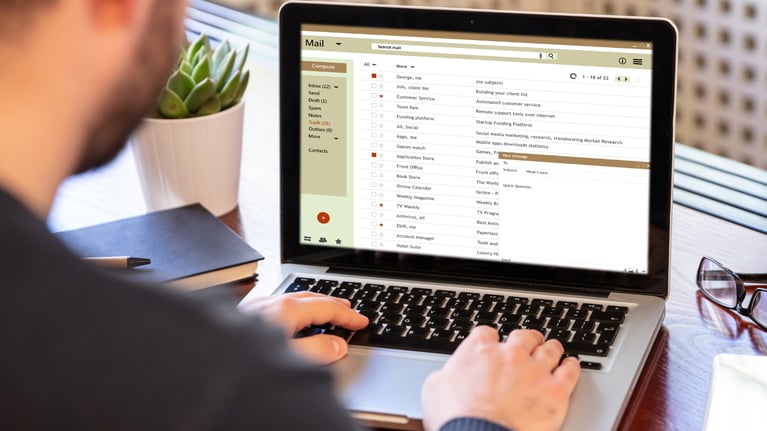These days, texting is synonymous with breathing – an extra metaphorical limb stretching across distances to communicate with friends, family, and customers.
There’s a lot of opportunity in integrating SMS outreach into your B2B marketing strategy – as about 61% of marketers still don’t use SMS. This means a well executed SMS marketing strategy can give you a considerable advantage over your competitors.
But even though 85% of customers prefer receiving text messages over a phone call or email, it’s important not to hang up your email marketing hat entirely. Communicating with your customers is most effective when you utilize a multi-channel approach.
In this article I’ll provide you with a brief SMS marketing 101 to help you understand when it’s best to send a text vs. an email to your customers and prospects.
SMS Marketing 101: What Is SMS Marketing?
SMS marketing is the act of communicating with customers or prospects through text messaging. In
B2B communications, text messages often contain promotions or discounts, meeting reminders, and other time-sensitive updates.
Most people – regardless of age or industry – have smartphones within arm’s reach for most of the day. This makes SMS one of the easiest and most effective ways to reach your customers.
But before you decide to go all-in on sms marketing, it’s important that you follow regional data privacy protection laws by ensuring all contacts you’re reaching out to have consented to receiving messages from you.
When To Use SMS Marketing vs. Email Marketing
When timing is of the essence and you want an immediate response, SMS messaging can be your best friend. With open rates for SMS as high as 98% and response times as quick as 3 minutes, you can leverage this channel in multiple areas of your marketing funnel, including:
- Confirming a product demo, including Zoom link, contact info, and date and time after a visitor fills out a form
- Following up after an offer is downloaded to suggest another related resource
- Providing exclusive information on conferences or membership renewals
- Giving company updates (especially helpful for product updates)
- Announcing a new webinar or annual report
- Beta testing a new feature for a software or new service offering
- Sharing the newest infographic or offer as a “you’re the first to know”
Remember that these messages are meant to spark immediate action and provide something contextually valuable in the moment for that person – so use texts sparingly, or else people may opt out if it seems too spammy or frequent.
SMS marketing shouldn’t be used solely as a conversion tool, as you’ll need more relationship building to close a sale. That’s where email comes in.
When To Use Email Marketing vs. SMS Marketing
Compared to SMS, email marketing is better for lead nurturing and other strategies that require multiple, frequent touchpoints. It is also better for distributing rich media and aesthetically pleasing marketing messages.
In B2B, email marketing is best for:
- Awareness-level content topic workflows
- Addressing common pain points based on persona
- Moving from MQL to SQL or SQL to opportunity stages
- Establishing lead scoring based on engagement and user activity
- New customer emails to nurture an ongoing relationship
- Feedback and survey opportunities that you share with subscribers first
- Re-engaging contacts that may have been unresponsive for a time
Email marketing can go places where SMS marketing can’t. It isn’t limited by character count and the privacy laws are slightly more lenient. Your customer’s may also be more open to receiving emails from you on a more frequent basis than SMS messages.
Make SMS Part Your Marketing Strategy
Both SMS and email are important channels for your marketing strategy. SMS marketing 101 dicates that text messaging should not be used as a replacement for email marketing, but to distribute your most important, time-sensitive messages to contacts that have opted in.
I hope this primer on SMS marketing 101 was helpful in clearing up any confusion. If you’re still curious about how to leverage this tactic in your B2B marketing strategy, contact us today for more tips and advice.









(1).jpg)

.jpg)


![5 Reports to Elevate Your HubSpot Sales Dashboard [+ Examples]](https://2363531.fs1.hubspotusercontent-na1.net/hub/2363531/hubfs/Imported_Blog_Media/6-winning-examples-of-a-hubspot-sales-dashboard-2.png?width=767&name=6-winning-examples-of-a-hubspot-sales-dashboard-2.png)

